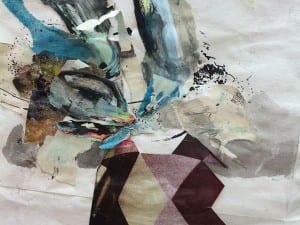A tender, ethereal spirit of the artist is revealed through the works of Hans Josephsohn, on display at the Upper East Side gallery of Hauser & Wirth. A kinetic energy excites the spaces between the sculptures such that the exhibition as a whole is one work of space and form. Particularly noteworthy is a stelae sculpture, Untitled (1951), which would mix in convincingly amongst the Metropolitan Museum’s collection of Ancient Egyptian Art. Straight, narrow and forward-facing, the piece evokes a palpable stillness that is typically in suggestion when in the presence of stone sculptures or artifacts of many centuries past.
In life, Josephsohn operated with a certain remove from the pleasures and pastimes of usual society and his developed introspection is evident in the details of his larger studies of the female form. In his contemplation of the body are intricacies and complex surfaces that reveal in minute detail many different worlds. His reclining female nudes, for example, are almost literal landscapes of process and progression in material and metaphor.
He has stated in an interview that the elements within each of his works create a complete piece only in terms of their mutual dependence on each other, in their relationship. Unlike holography, the whole object does not exist within each part. And yet, within each part of his reclining nudes, there are whole worlds residing in the contours of the surfaces. These worlds resemble nature, rock canyons or valleys. And in the seeming allegory within the details of nature, while any given art object itself may not exist in each of its own parts, nonetheless many parts speaks volumes about a larger, albeit ambivalent, holistic structure.
If as has been suggested in Josephsohn literature the artist viewed the body as the only reliable vehicle through which reality could be understood, and that it is both the means and the end of existence, it would make an ironic sense that the sculpture of the body on display is somewhat more morphology of humanity than replica or narration of human action. There is nothing definite about the bodies and sculptural portraits on display. This evident flux hewn in stone challenges a strictly materialist interpretation of the art or artist, at least in the sense that the only thing through which we can know — the body — is also in a state of constant conversion or elusiveness.
The exhibit holds approximately 40 works, including reliefs, partial figures and portrait sculptures. Melding decidedly with their temporary home, the works on display are simultaneously stark and fluid. The curatorial placement of the objects is laser perfect and it is said that in their “aliveness” the objects themselves assisted the art professionals in choosing their exhibition placement.
Josephsohn, until 22 February, Hauser & Wirth, 32 East 69th Street, New York, NY 10021.
Odette Gregory
Credits
1. Untitled, 1951, Brass, 190 x 30 x 26 cm / 74 3/4 x 11 3/4 x 10 1/4 in, Installation view, Yorkshire Sculpture Park, 2013, Photo: Katalin Deér.





